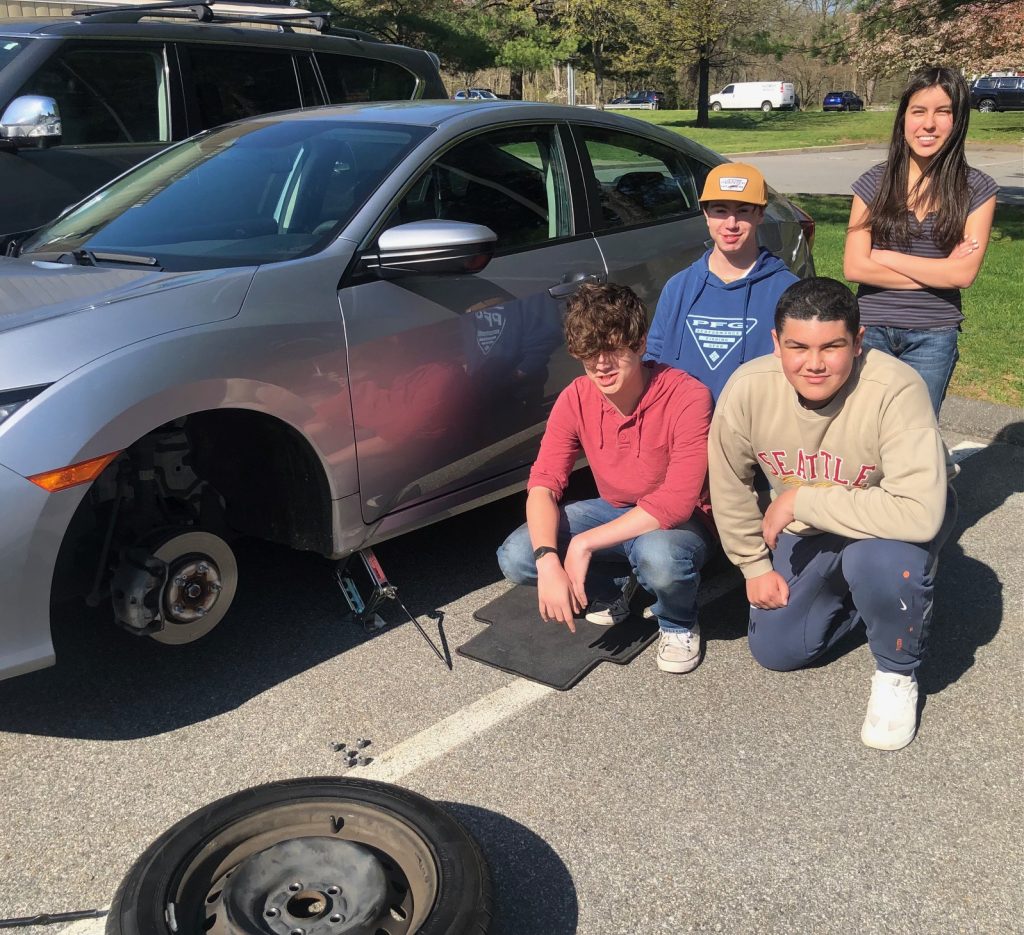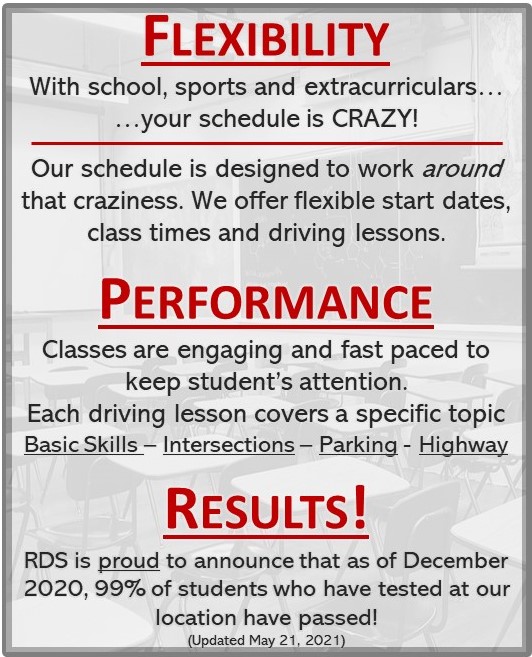For Parents
Teaching your teenager to drive can be an intimidating experience. But, as difficult as the task may be, getting your neophyte driver out on the road is critical. We cannot emphasize strongly enough how important at-home practice is. The eight hours of road training with us is just a beginning. We recommend that before going for the license exam, the student should have practiced for at least 60 hours in addition to our lessons. Keep a small notebook in the glove compartment and record practice times. The student should drive every day. This practice must take place in a variety of driving situations, but the emphasis should be on intersections. Driving is a decision-making process, and intersections are where the greatest number of decisions must be made.
Hints for Parents
- Start off slowly. Initial experience should start in a parking lot. Keep the vehicle in 2nd gear. Have the student practice basic accelerating and braking. The student should be able to EASE the car into motion and should be able to come to soft, controlled stops. Have the student practice CREEPING the car by precisely regulating brake speed. We will be teaching the student to use HAND-OVER-HAND steering into and out of turns; they can begin practicing this.
- When you venture out onto actual roads, choose quiet routes or quiet neighborhoods and beginning practices should be at quiet times. At this point the objective is to build a basic comfort level with the physical operation of the car so the student can be relaxed. Practice should not be stressful; both student and parent need time to gain confidence. The objective is to get the student so comfortable with the physical aspect of driving that attention can be focused on finding critical details ahead and making decisions. The most difficult task that the new driver has to master is developing the proper visual skills. Most collisions, even among experienced drivers, occur because the driver does not “see” some critical detail whether it is a sign, a turn signal, a backing vehicle, or a stopped school bus.Help your new driver notice important details ahead. Point out the warning signs, the lights, the stop signs, the curves, the communication signals from other road users.Have the student talk to you while driving about what is observed and what action will be taken. This will help the student plan strategies and can help you feel more comfortable. Instead of wondering if the new driver sees the pedestrian ahead, the student can tell you, “There is a pedestrian about to cross the road; I am going to slow my car.”Remind the student to look far out ahead of the vehicle; if the student looks down at the line or the side of the road, that is where the car will go. Constantly remind the student to project vision as far ahead as possible; this is what will enable smooth tracking.
- Become comfortable in your position sitting in the passenger front seat. This will be an unaccustomed perspective for you and you may feel that your child is about to take down every mailbox you pass. New drivers may have a tendency to hug the right side of the road, but parents often are telling the student to move left when there is no need to make that adjustment. If a student is going to be too far to one side, it would be better to err too far to the right than to the left; the mailbox will be less damaging than the on-coming vehicle! The surest way for the driver to maintain proper lane position is to look far out ahead of their vehicle into the middle of their lane.
- Be aware of your position as role model for your student. As your child works through out classroom program, your new driver will be alert to the mistakes that you make, and will be more attentive to your driving style. Think about the messages that you are sending by example. Are you often 15 – 20 mph over the speed limit? Are you allowing yourself to be distracted by your cell phone? Do you tailgate or exhibit frustration and irritation while driving? Are you operating as a polite, respectful driver, or do you ignore laws when you find them an inconvenience?
- Express an interest in what your student is learning in their driver’s ed course. We will give the student a comprehensive summary at the end of each road lesson. Be certain to look for these lesson summaries. These are the details that should be practiced. Call or e-mail us with questions.
- As the student’s vehicle control improves, it is important to remember that the physical aspect of driving is the easy part. Driving is a primarily a mental task. It is a complicated decision-making process that requires active mental engagement at all times. Giving your child the opportunity to develop decision-making skills during controlled, supervised practice time is critical. It is always obvious to us when we work with students who are getting this all-important at-home practice.
(We remind students to thank parents for their investment of time.)




